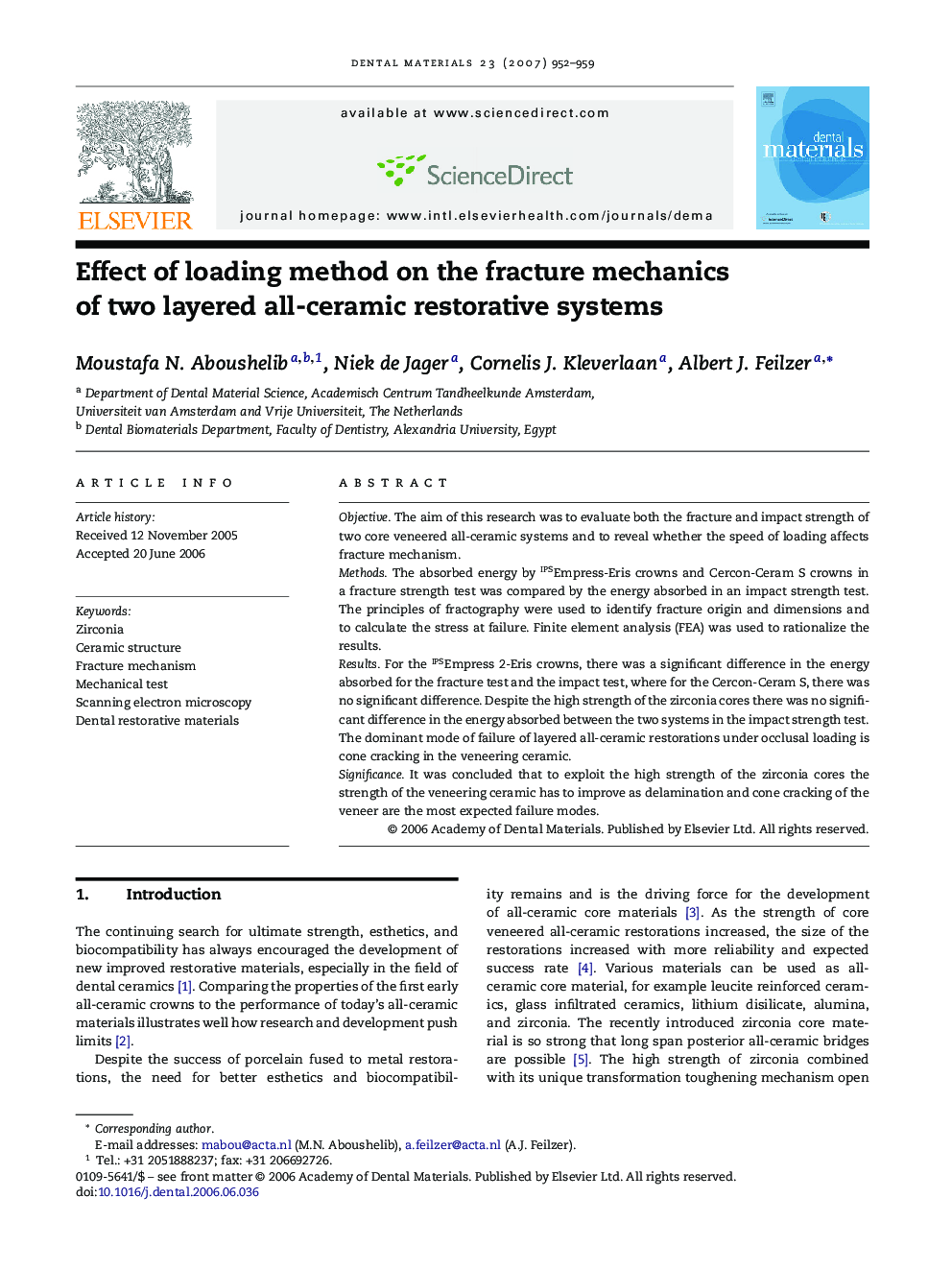| Article ID | Journal | Published Year | Pages | File Type |
|---|---|---|---|---|
| 1423311 | Dental Materials | 2007 | 8 Pages |
ObjectiveThe aim of this research was to evaluate both the fracture and impact strength of two core veneered all-ceramic systems and to reveal whether the speed of loading affects fracture mechanism.MethodsThe absorbed energy by IPSEmpress-Eris crowns and Cercon-Ceram S crowns in a fracture strength test was compared by the energy absorbed in an impact strength test. The principles of fractography were used to identify fracture origin and dimensions and to calculate the stress at failure. Finite element analysis (FEA) was used to rationalize the results.ResultsFor the IPSEmpress 2-Eris crowns, there was a significant difference in the energy absorbed for the fracture test and the impact test, where for the Cercon-Ceram S, there was no significant difference. Despite the high strength of the zirconia cores there was no significant difference in the energy absorbed between the two systems in the impact strength test. The dominant mode of failure of layered all-ceramic restorations under occlusal loading is cone cracking in the veneering ceramic.SignificanceIt was concluded that to exploit the high strength of the zirconia cores the strength of the veneering ceramic has to improve as delamination and cone cracking of the veneer are the most expected failure modes.
